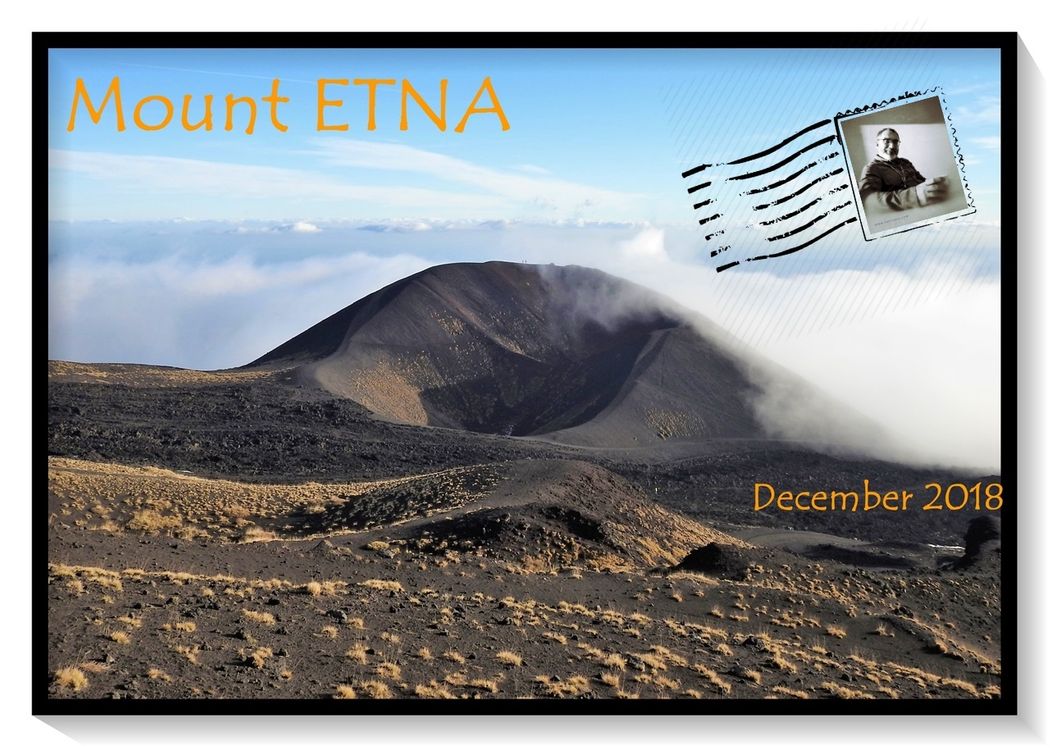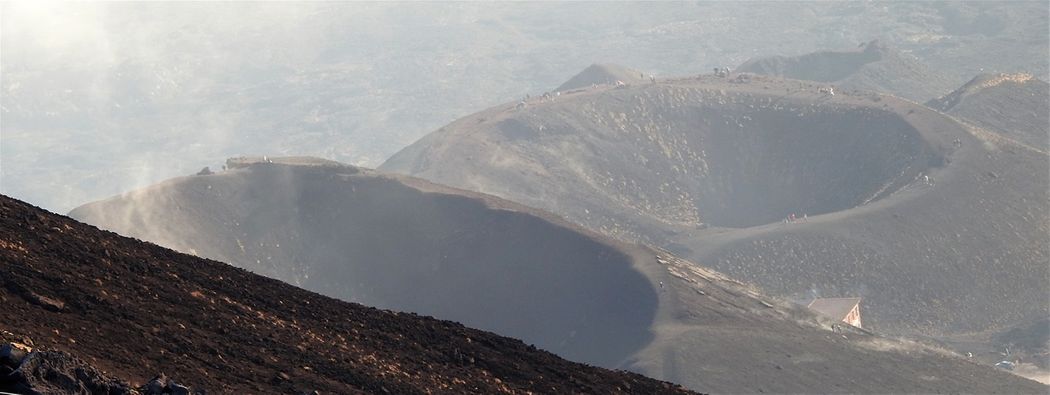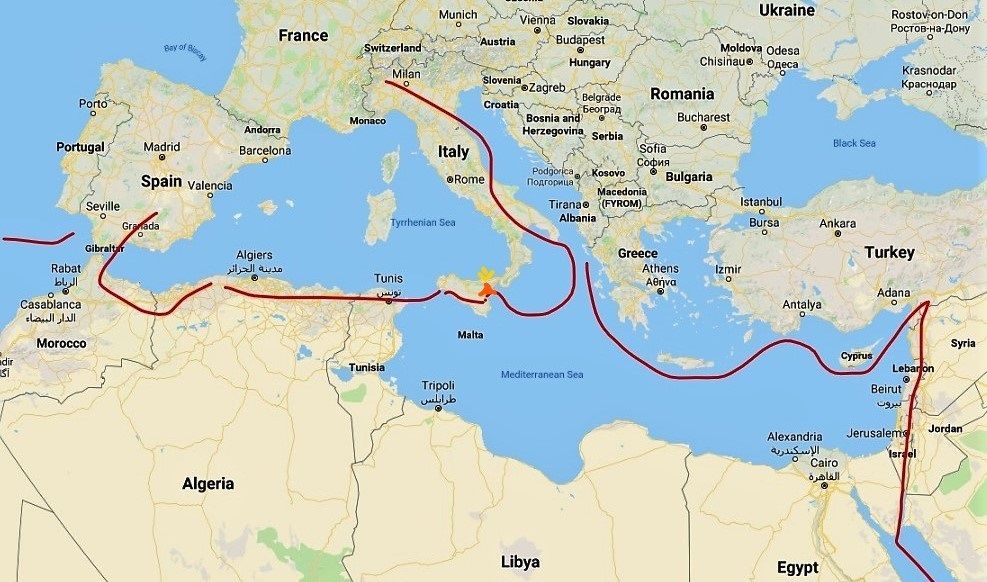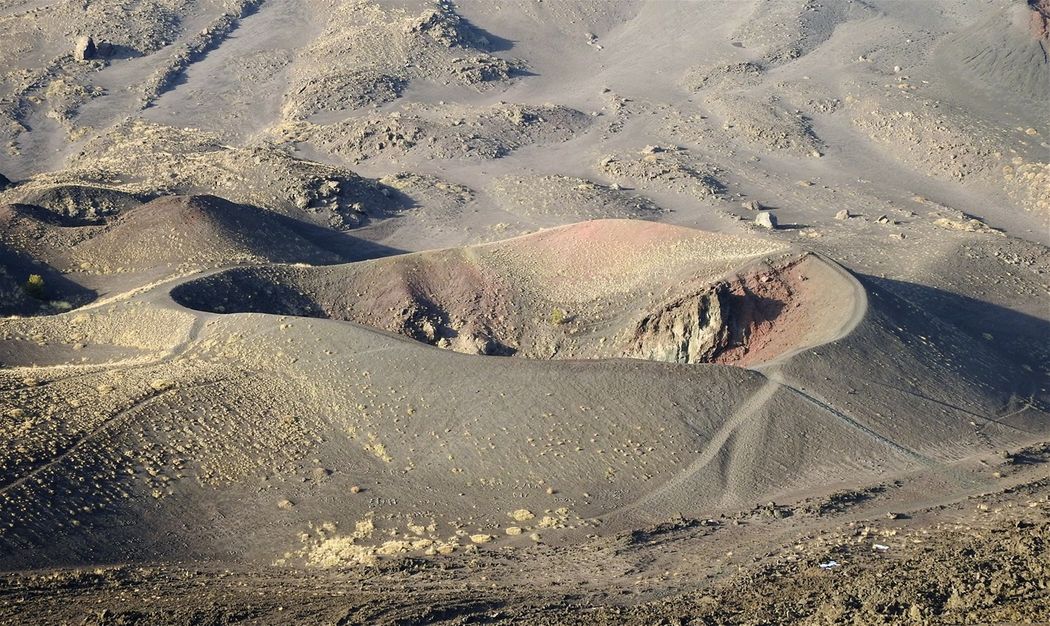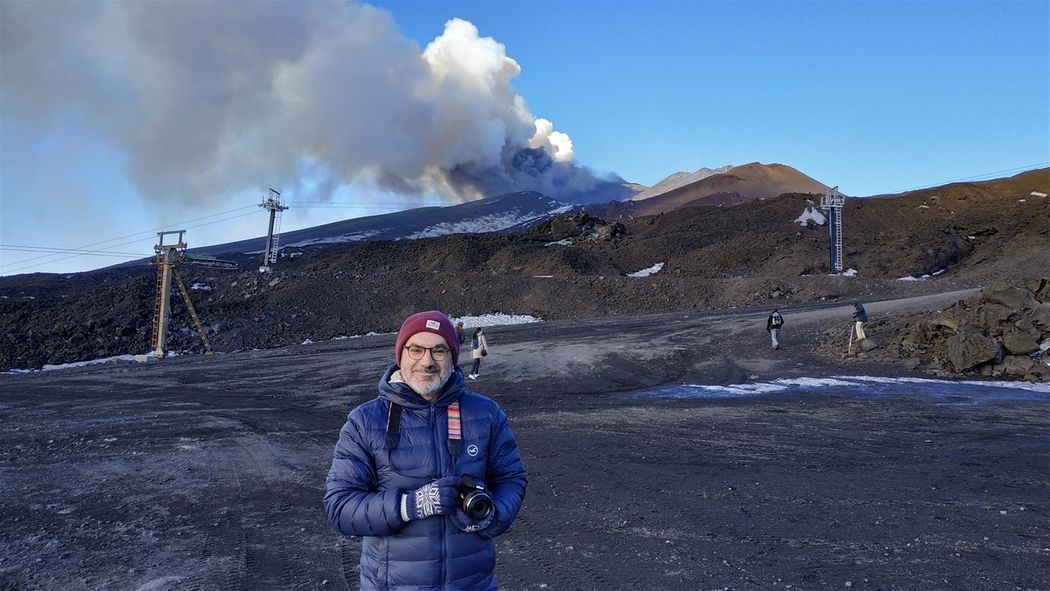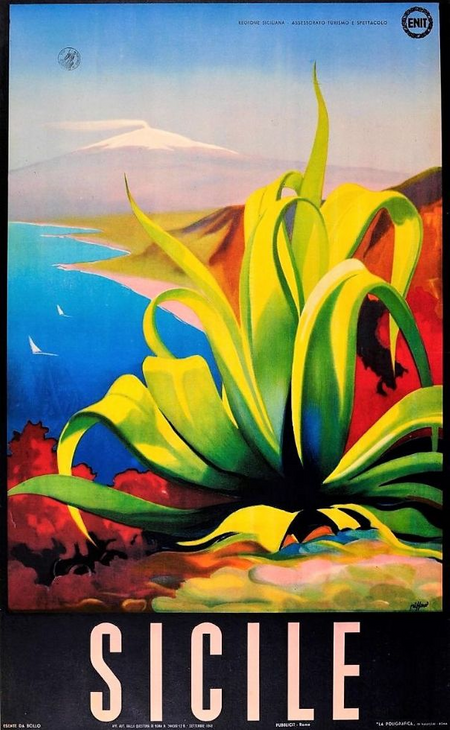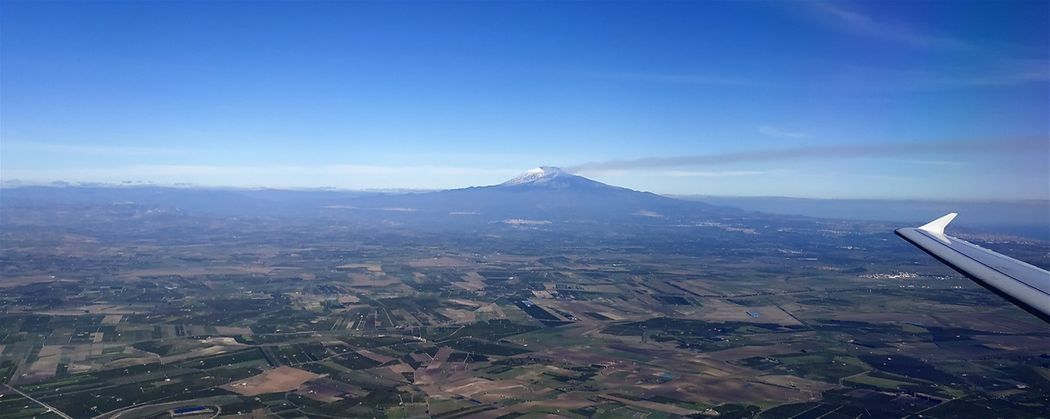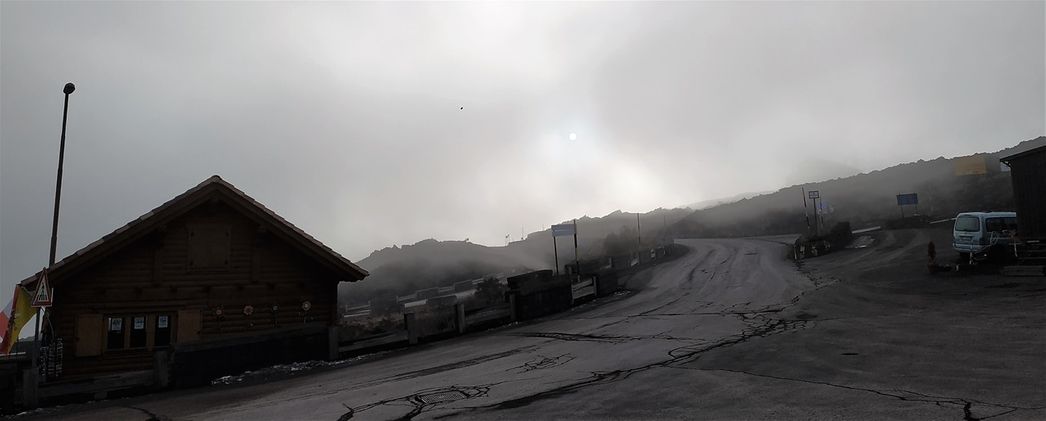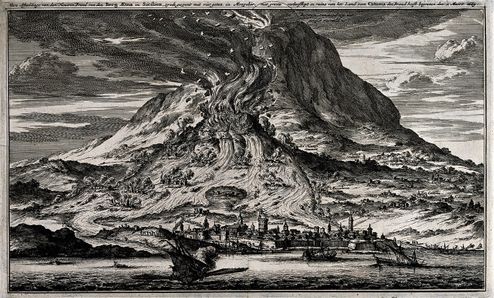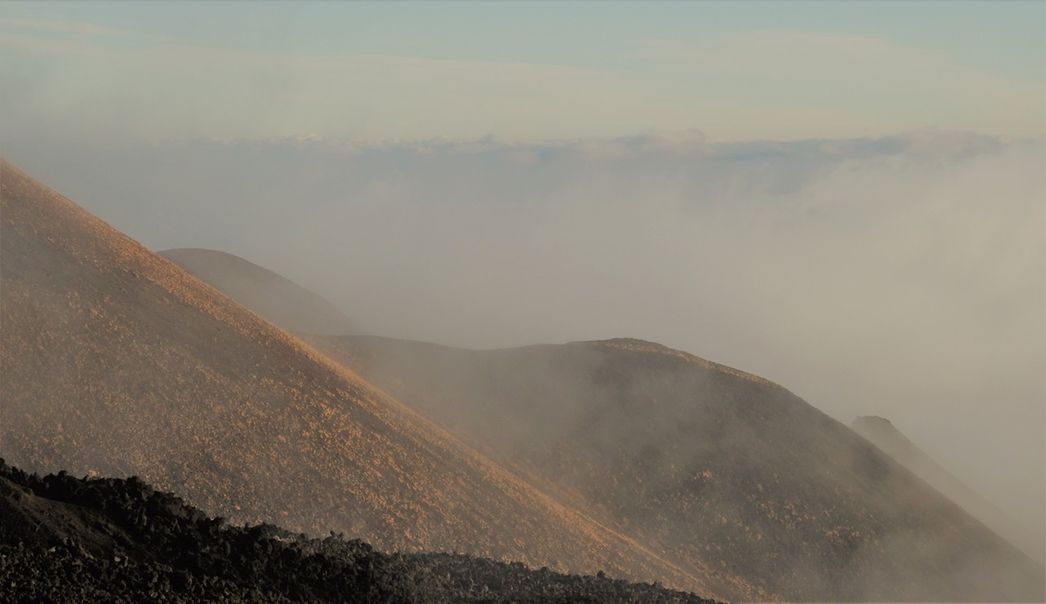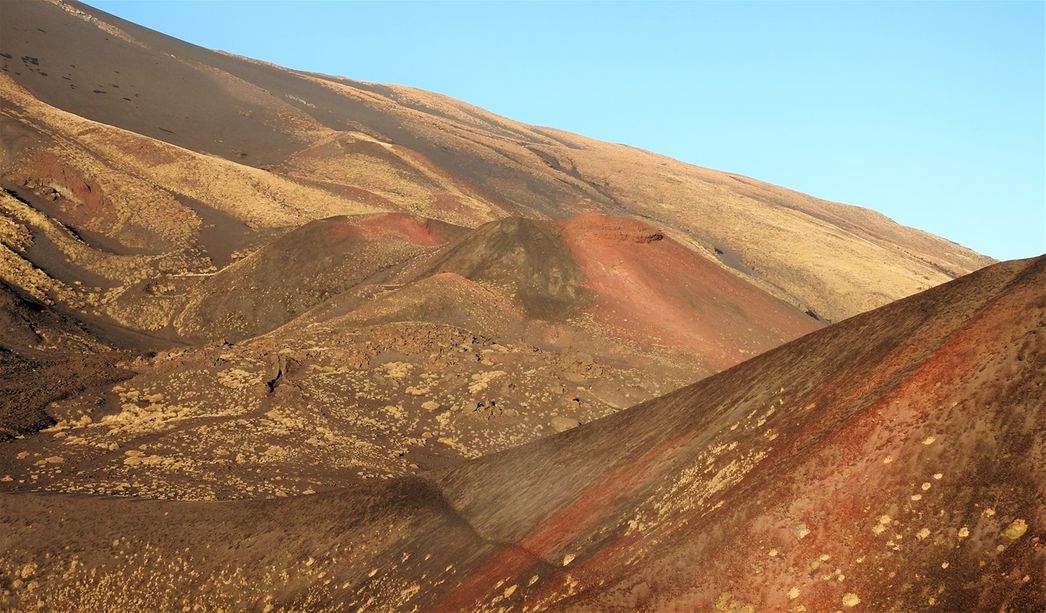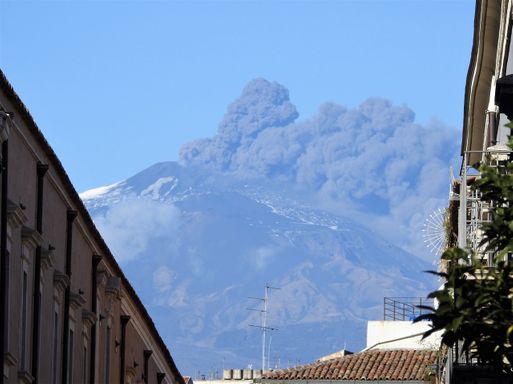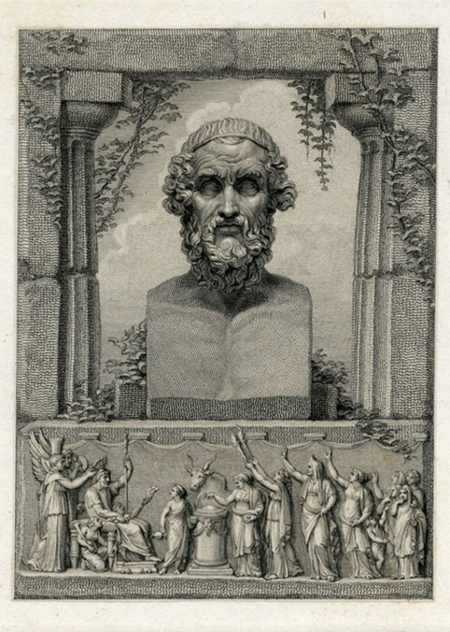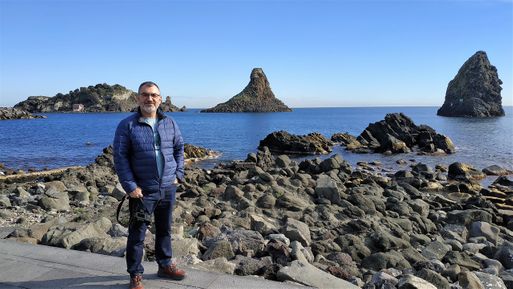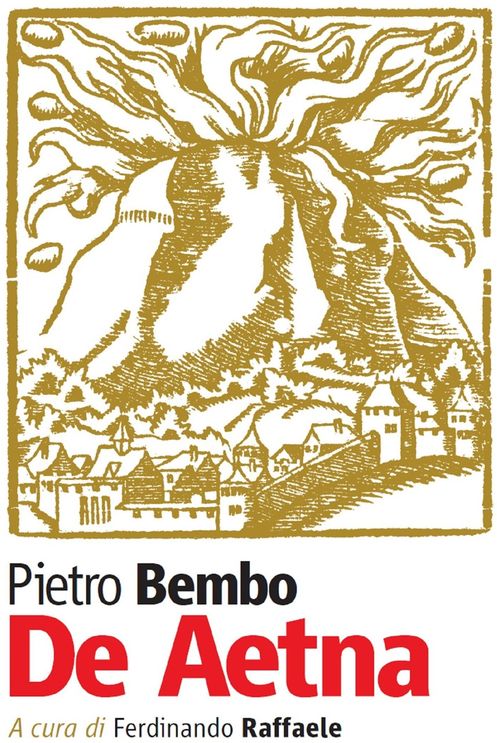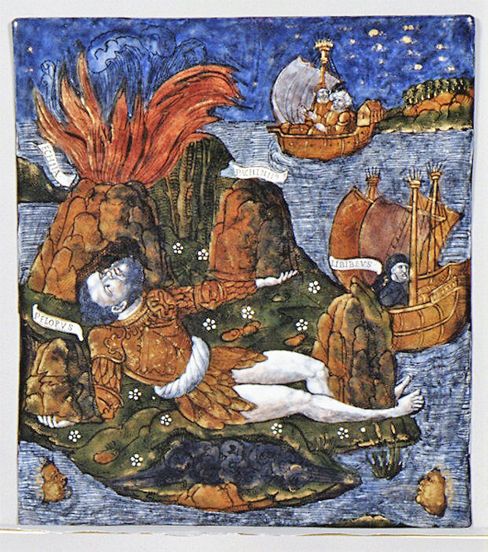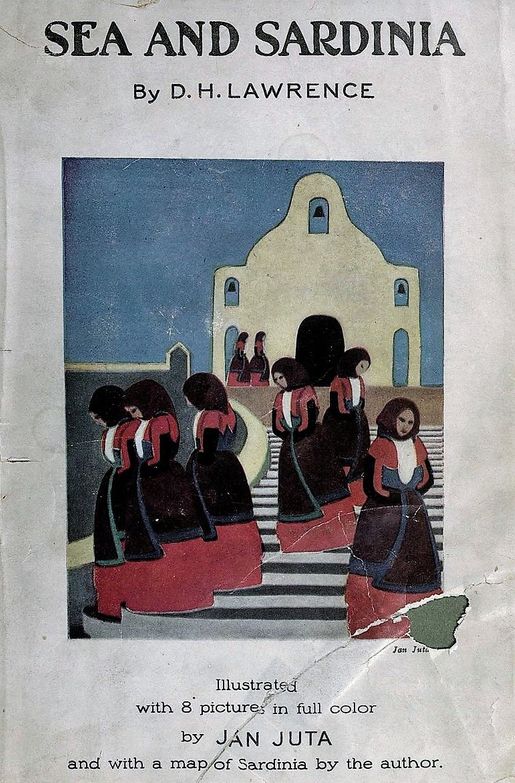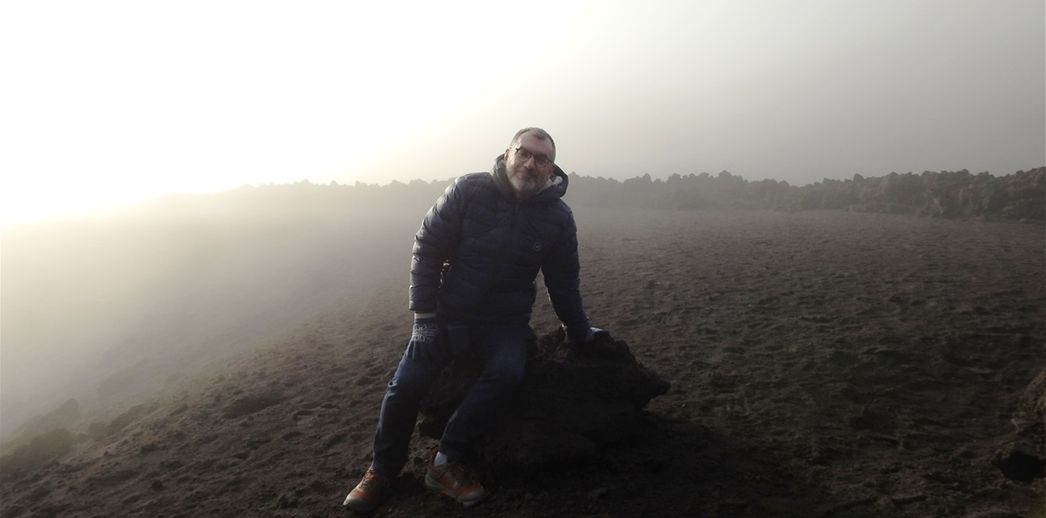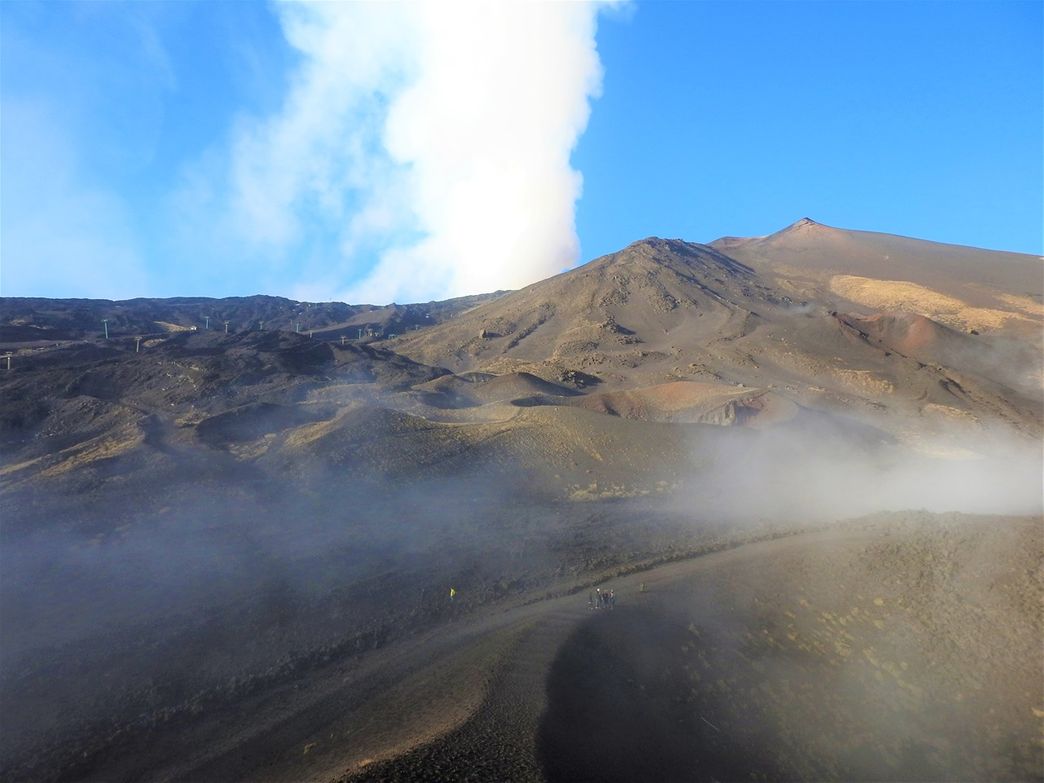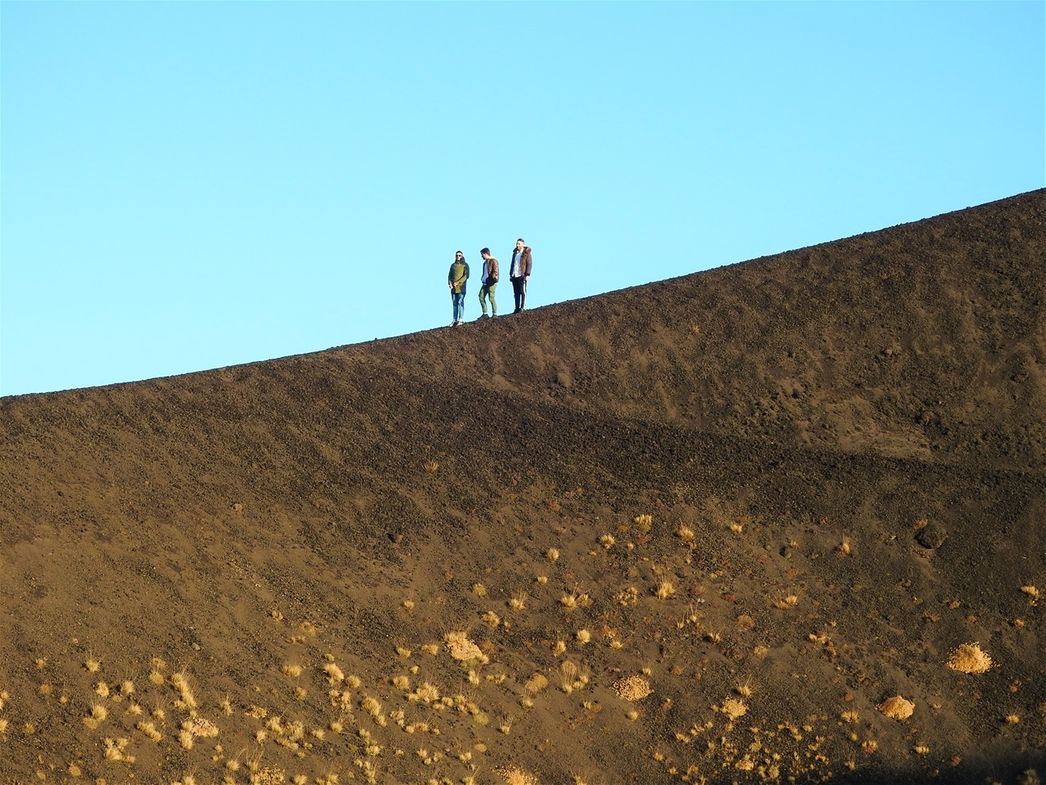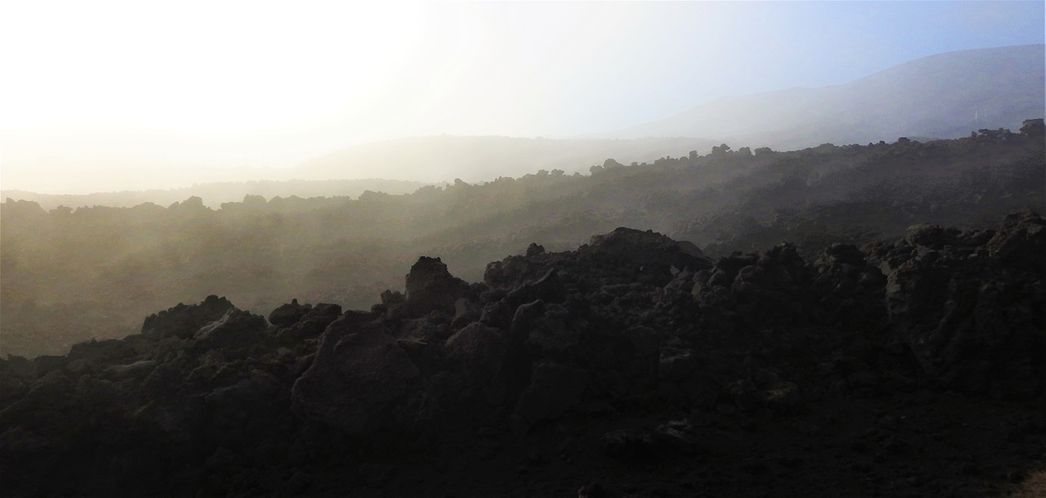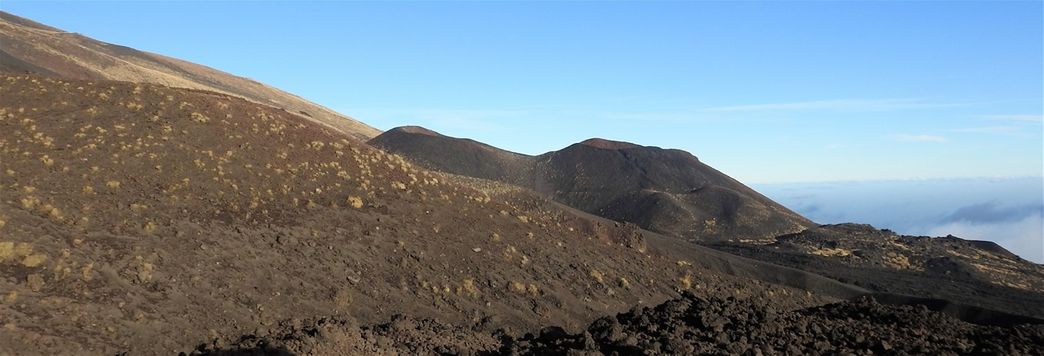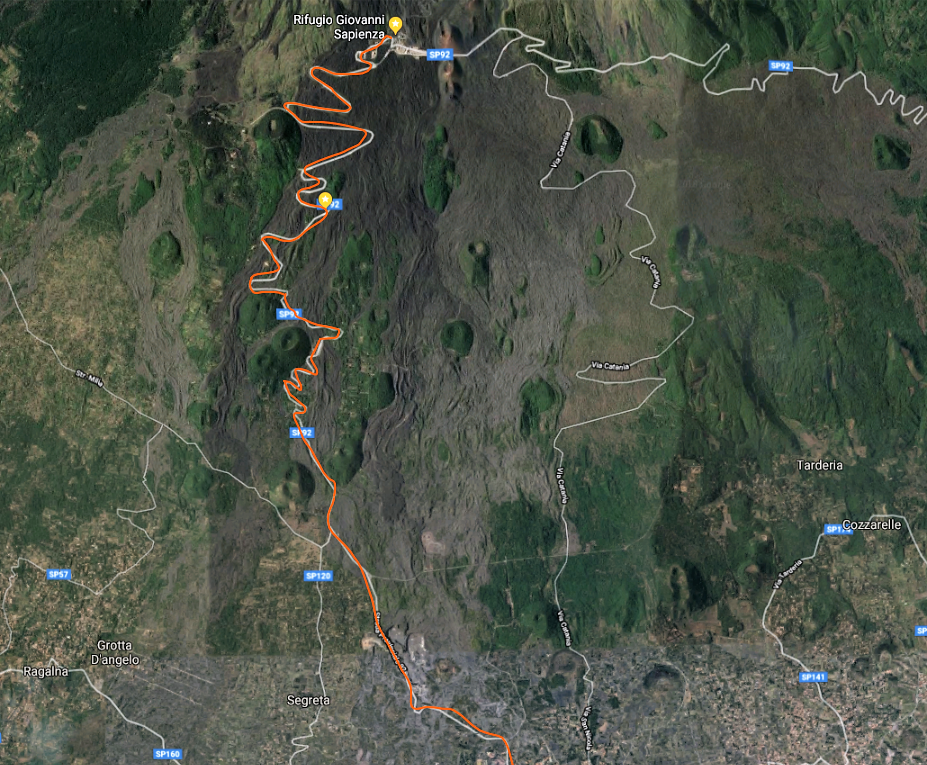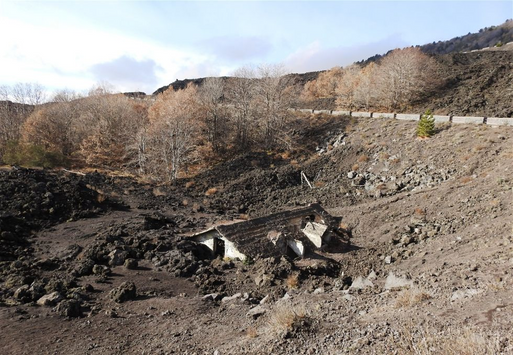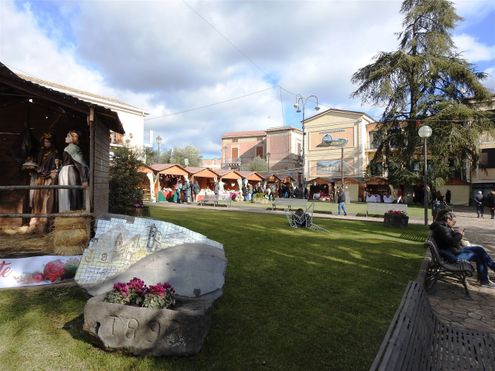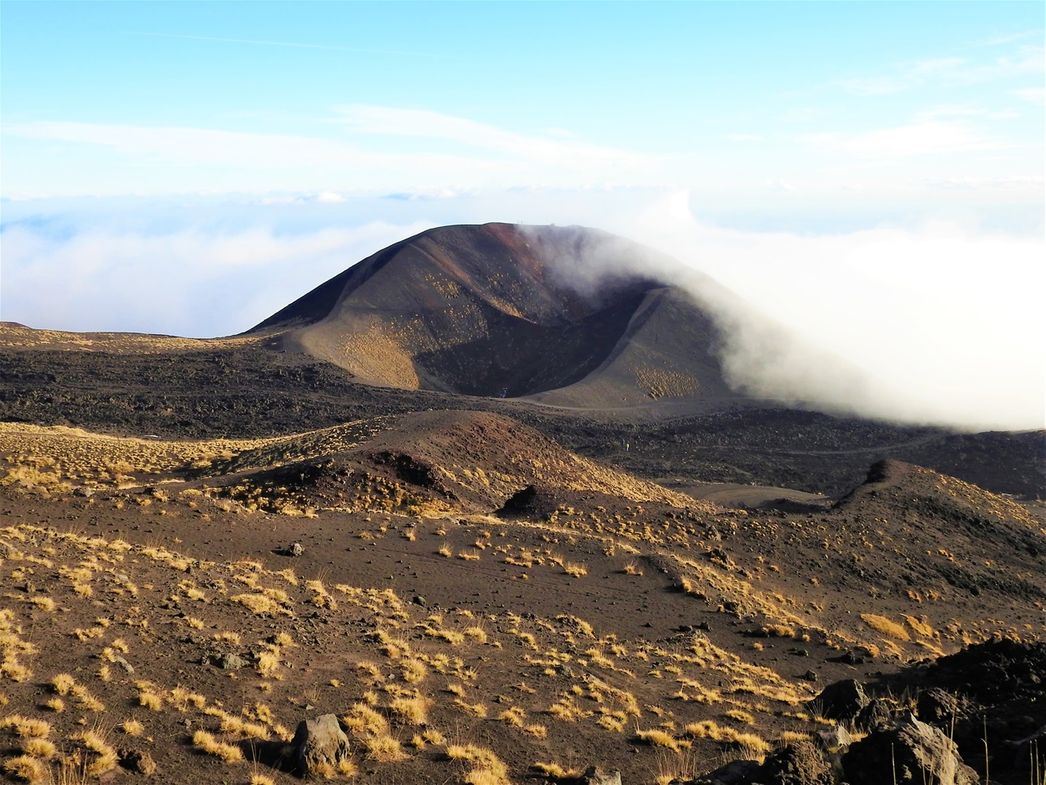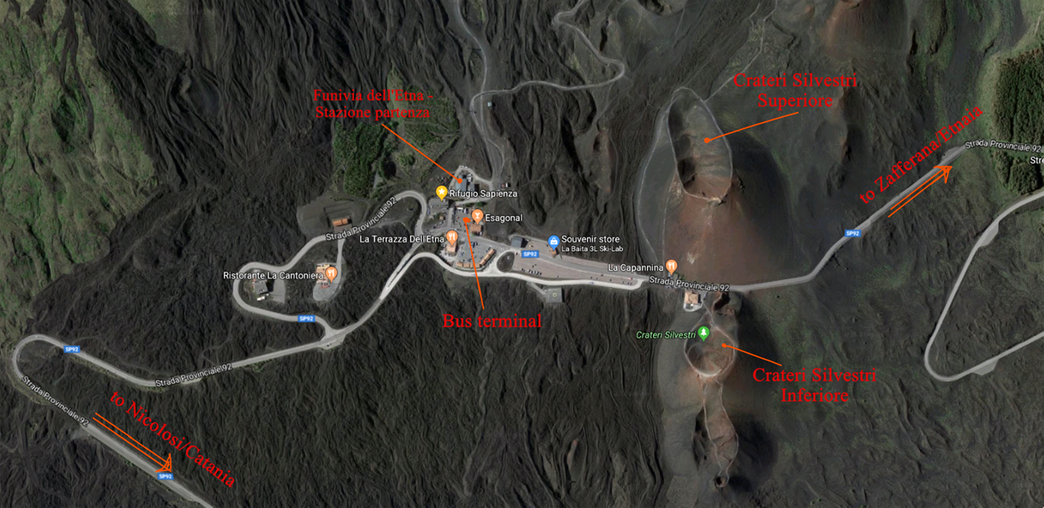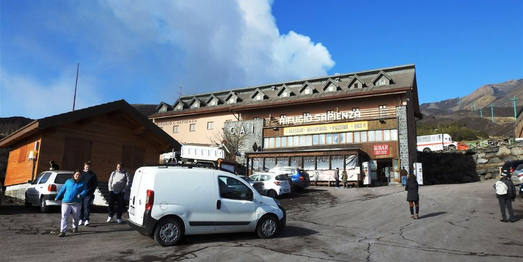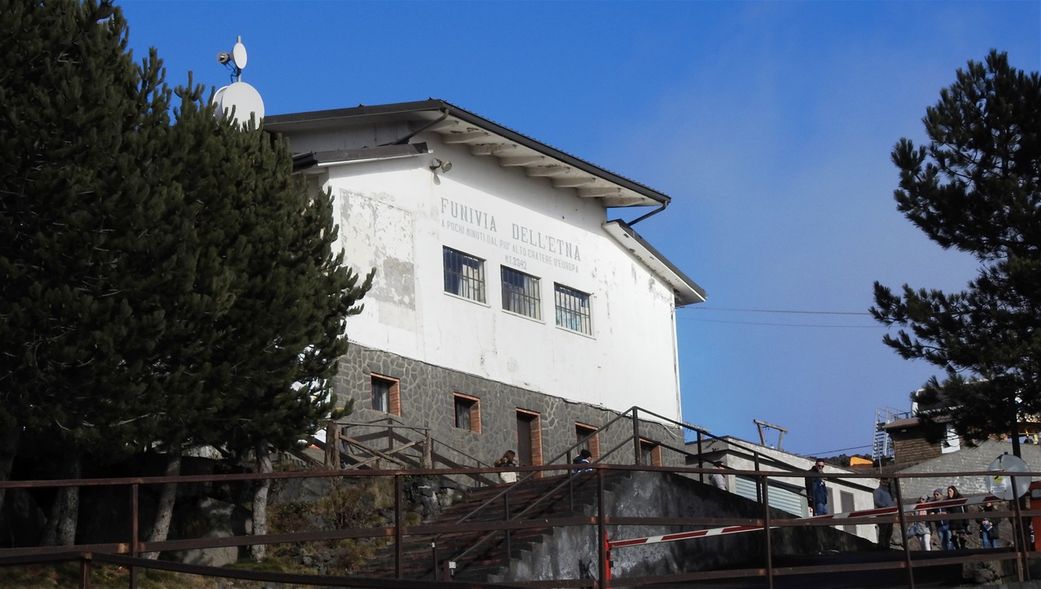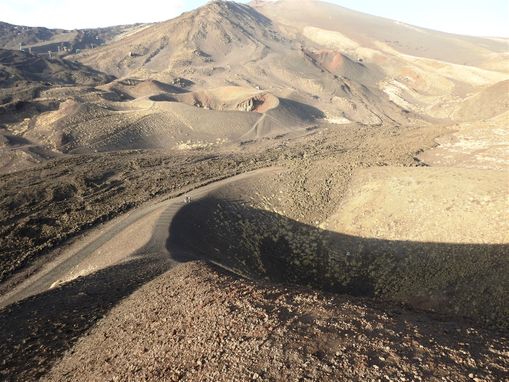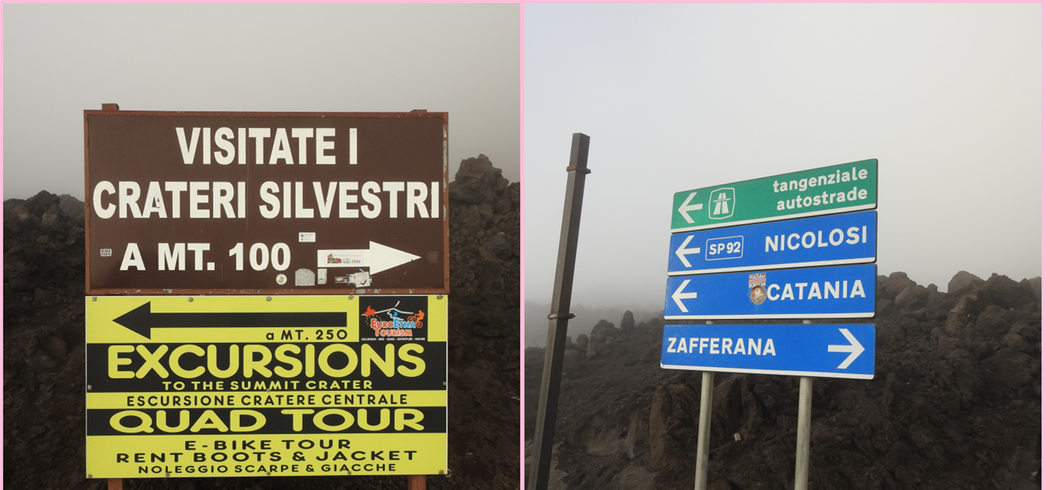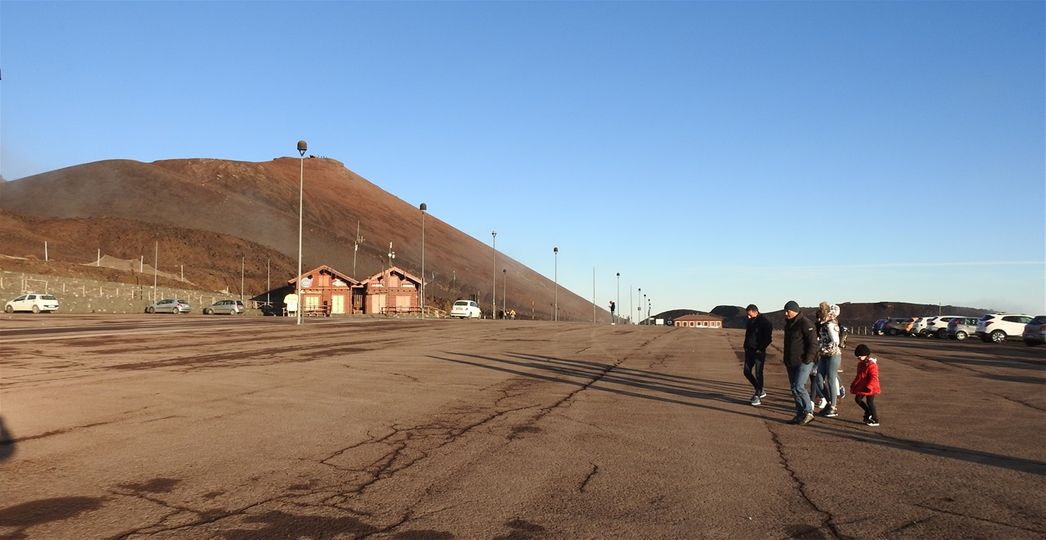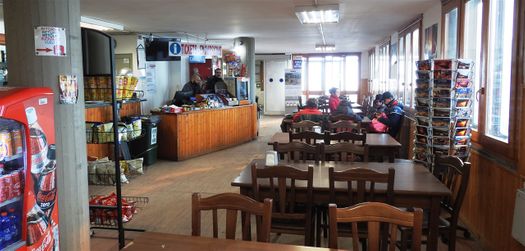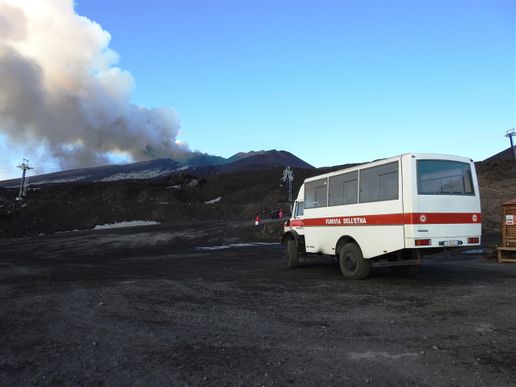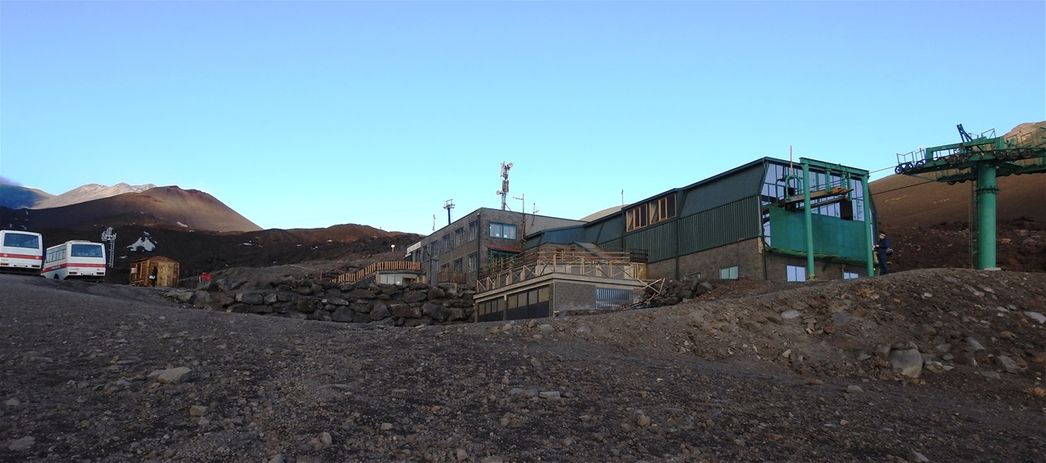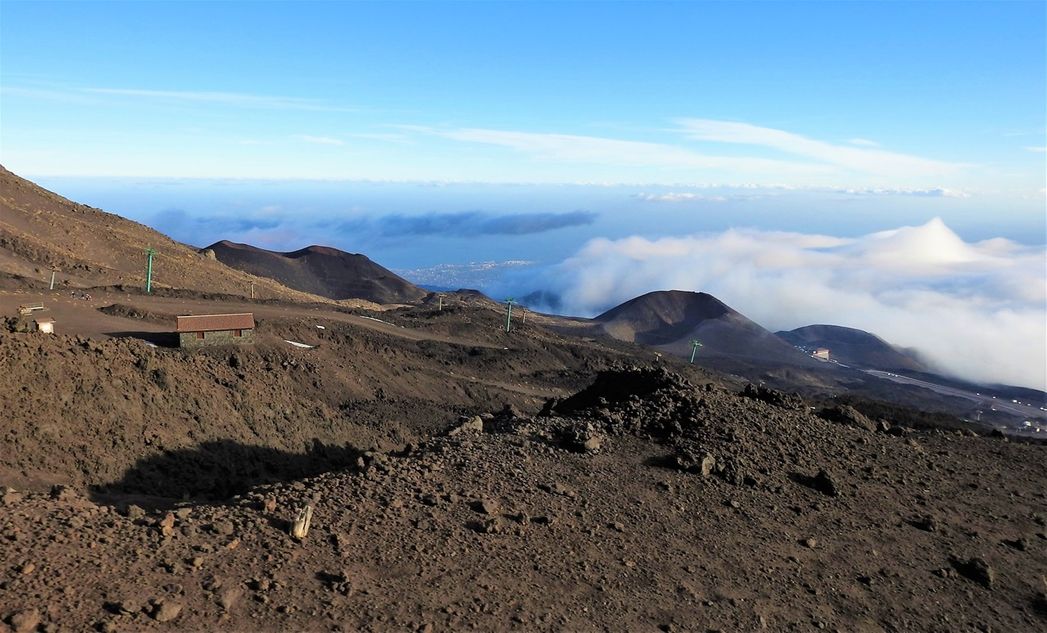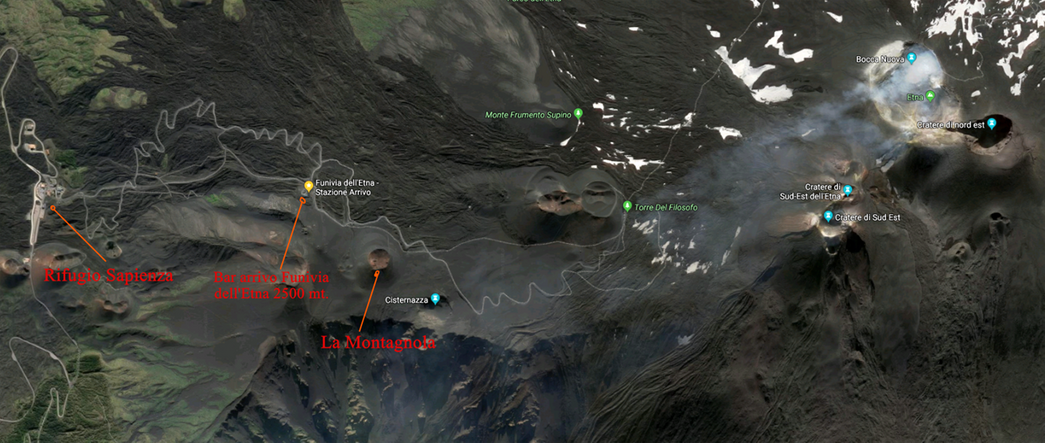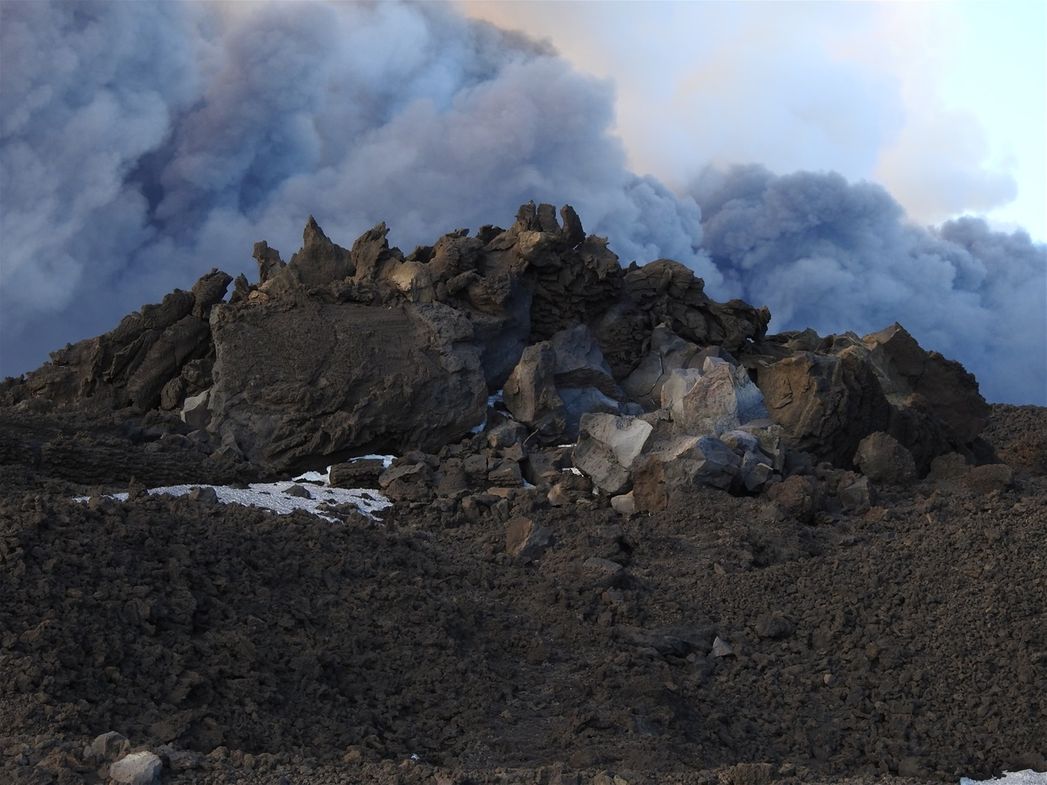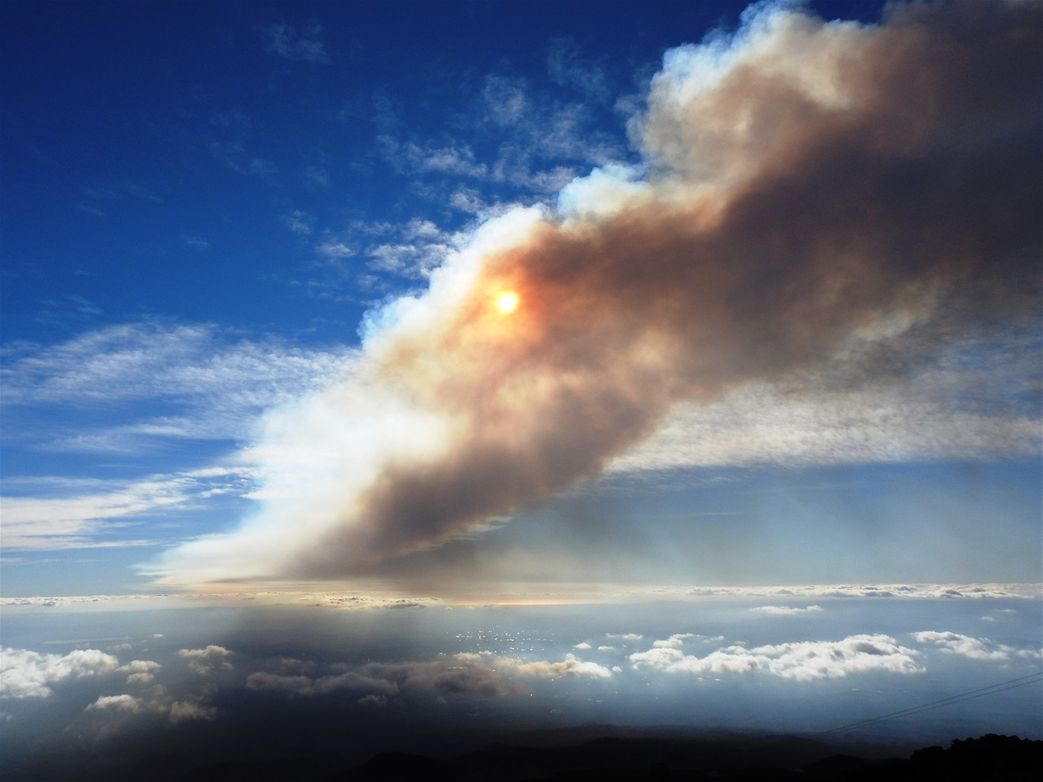Etna is not just another volcano.
She is a legend and a woman adored and feared.
'I had heard about the stupendous iridescence of the Ionian Sea, when you contemplate it from Etna's summit. I determined to undertake the ascent of that mountain; We passed from the region of vineyards, the lava, then snow. The child's legs dancer ran on those steep chine; the scholars who accompanied me went up on the backs of mules. On top it was built a shelter where you can wait for the dawn. This finally appeared: a huge scarf of Iris stretched from horizon to horizon; strange fires shone on the ice of the summit; the earthly and marine vastness revealed to our gaze far as Africa, clearly visible, and Greece that one guessed. It was one of the supreme moments of my life. Nothing was missing, or the golden fringe of a cloud, nor the eagles, nor the bearer of immortality.'
"Adrian's memories", Marguerite Yourcenar
Introduction
Mount Etna on Sicily is Europe's largest and most active volcano. Its frequent eruptions are often accompanied by large lava flows, but rarely pose danger to inhabited areas. Towering above Catania, Sicily's second largest city, Etna has one of the world's longest documented records of historical volcanism, dating back to 1500 BC. Historical lava flows cover much of the surface of this massive volcano, which makes it the tallest (currently 3329m) and most voluminous in Italy. Ever since ancient times, the volcano seems to have been in near-constant activity. It is considered, after Kilauea on Hawaii, the second most active (productive).
The african tectonic plate collides with the european across the mediterranean Sea. Etna is a result of this gigantic friction.
“A' Muntagna” (“the mountain” in Sicilian) has always dominated the lives of those who live in its shadow: its lava flows and dust clouds bring destruction, but they also enrich the soil, making the lower slopes and the surrounding plains some of the most fertile regions in Sicily, and spawning vast expanses of vines, pistachio and citrus plantations. The periodic eruptions have been well documented through history. Recent eruptions have been spectacular in their nature, though quite safe as they start far from inhabited areas. Whenever Etna erupts, journalists and travelers are drawn from all over the world to admire the unique sight of the smoking craters and snaking lava flows, which are visible from miles away. Hiking on Etna is a fabulous experience.
An important warning: Etna is dangerously beautiful and she may put a spell on you. It is not what you expect. It is not just a cone with a crater on the top. Etna is many craters thrown here and there in all shades of black, brown, golden and red... wherever you look around there is a crater, small or bigger, luring visitors into its chaotic splendor!
Me and the mighty volcano!
As of May 2013, Mount Etna has been a UNESCO World Heritage Site, thanks to it being "globally recognized on basis of its notoriety, scientific importance, cultural and educational value, superlative natural phenomena and exceptional aesthetic importance as iconic volcanic site."
Far before approaching to Catania airport, Etna’s cone impresses you with its beautiful shape and snowcapped summits. If you are lucky enough, like I was when I visited in December 2018, a tall column of smoke will be coming out of it! I could not take my eyes off it. It was like a child’s drawing: a beautiful cone with a stream of smoke coming straight out of it to a certain altitude and then bending horizontally and siting loosely on one of the atmosphere layers! Mesmerizing!
Etna imposes its greatness all over the island, and can be seen from far away places on the island.
Old touristic poster of Sicilia. Etna at the background.
Etna smoking as seen from the aeroplane approaching Catania airport.
Etymology
The word Etna is from the Greek αἴθω (aithō), meaning "burn". In Classical Greek, it is called Αἴτνη (Aítnē), a name given also to the cities of Catania and Inessa. In Latin it is called Aetna. It is also known as Mungibeddu in Sicilian and Mongibello or Montebello in Italian, which literally means "beautiful mountain". According to another hypothesis, the term Mongibello comes from the Latin Mulciber (qui ignem mulcet, "who placates the fire"), one of the Latin names of the Roman god Vulcan. Today, the name Mongibello is used for the area of Mount Etna containing the two central craters, and the craters located southeast and northeast of the volcanic cone.
The smoke coming out from Etna covers the summer sun.
Recent eruptions
The longest eruption in historical memory was on July, 1614. The phenomenon lasted ten years and made more than a billion cubic meters of lava, covering an area of 21 Km2 on the northern slope of the volcano.
In 1669 occurred the most famous and destructive eruption, which reached and surpassed the city of Catania: it destroyed the outside of the western walls, where the Ursino Castle is today, but thanks to the walls the lava ran along them and driven away to the sea. The eruption was heralded by a tremendous roar and an earthquake that destroyed the town of Nicolosi and damaged several others.
Then, a huge crack opened at the summit area, above Nicolosi, and began to produce huge amounts of lethal lava. The gigantic lava front advanced inexorably burying several towns and villages before reaching the Ionian Sea. During that eruption, two pyroclastic cones created, which are now called Monti Rossi. The eruption lasted for 122 days.
The 1669 Etna eruption.
In 1892 another eruption led to the formation, at approximately 1,800 meters above sea level, the complex of the Monti Silvestri, a spectacular complex of craters, which are the most easily accessible by tourists today.
The astonishingly beautiful and diverse color palette of the volcano.
The 1983 year is memorable, not only for the duration of the eruption (131 days) and the amount of lava flown, but also because for the first time in the world, the lave deviated by technical means. Human imposed on nature’s forces.
The 1991–1993 eruption saw the town of Zafferana threatened by a lava flow, but successful diversion efforts saved the town with the loss of only one building a few hundred meters from the town's limit.
An eruption on 16 March 2017 injured 10 people, including a BBC News television crew, after magma exploded upon contact with snow.
A lateral eruption (also called a flank eruption, a volcanic eruption that takes place on the flanks of a volcano instead of at the summit) on 24 December 2018 spewed ash into the air, forcing the closure of airspace around Mount Etna. Two days later, a magnitude 4.8 earthquake shook the nearby city of Catania, damaging buildings and injuring some people. I eye witnessed this eruption, while I was walking around Catania in a very clear and sunny day, which was doomed to become dark and dusty.
The 24 December 2018 eruption photographed by me (Catania) from Castelo Ursino.
Etna in Myth and Literature
Etna since ancient Greece was a source of inspiration for writers and artists.
In the 'Odyssey”, the one-eyed Cyclops Polyphemus furious with Ulysses who blinded him, hurls lava blocks towards his ship. These blocks, big as islets, can still be seen outside the port of Aci Trezza , at the eastern foots of Etna. In Greek mythology, the Cyclopes were the blacksmiths of God Hephaestus who forged Zeus’ thunderbolts at Etna.
Pindar (c. 522 – c. 443 BC) was an Ancient Greek lyric poet from Thebes.
The blocks-islets, that Polyphemus threw towards Ulysses' boat can still be seen outside the port of Aci Trezza.
Ancient Greek lyric poet, Pindar (Πίνδαρος), in his First Pythian Ode, he celebrates a victory of the Sicilian tyrant Hieron of Syracuse, in the chariot race at the Pythian Games of 470 BC. He links some of the monsters that Zeus had to defeat when they threatened the world with chaos (particularly the hundred-headed giant Typhon who, according to legend, Zeus eventually buried beneath Mount Aetna) with some of the events in the military history of Sicily, such as the defeat of the Etruscans at Cumae in 474 BC by Hieron and Gelon, and the defeat of the Carthaginians at Himera in 480 BC. He, also, describes the foundation of the city of Aetna under the rule of Hieron’s son Deinomenes as the establishment of a fresh outpost of the glorious Dorian way of life, and suggests that Hieron’s victory in the Pythian games bodes well for the future prosperity of the new city.
BUT whomsoever Jove
Hath looked on without love,
Are anguished when they hear the voiceful sound;
Whether on land they be,
Or in the raging sea; (5)
With him, outstretched on dread Tartarian bound,
Hundred-headed Typhon; erst
In famed Cilicia’s cavern nurst;
Foe of the gods; whose shaggy breast,
By Cuma’s sea-beat mound, is prest; (10)
Pent by plains of Sicily,
And that snowed pillar heavenly high,
Ætna, nurse of ceaseless frost;
From whose caverned depths aspire,
In purest folds upwreathing, tost, (15)
Fountains of approachless fire.
By day, a flood of smouldering smoke,
With sullen gleam the torrents pour;
But in darkness, many a rock,
Crimson flame, along the shore, (20)
Hurls to the deep with deafening roar.
From that worm aloft are thrown
The wells of Vulcan, full of fear;
A marvel strange to look upon,
And, for the passing mariner, (25)
As marvellous to hear;
How Ætna’s tops with umbrage black,
And soil do hold him bound,
And by that pallet all his back
Is scored with many a wound. (30)
Pindar-Ætna (from the First Pythian Ode)
The ancient greek historian, Thucydides (Θουκιδίδης), also known as the 'father of scientific history', in his narrative about the Peloponnesian War, refers an eruption occurred in 425 BC.
The Roman poet Virgil (70–19 BC) gave what was probably a first-hand description of an eruption in the Aeneid. We read in Book III of Aeneid: "The port capacious, and secure from wind, Is to the foot of thund'ring Etna joined. By turns a pitchy cloud she rolls on high: By turns hot embers from her entrails fly, And flakes of mounting flames, that lick the sky. Oft from her bowels massy rocks are thrown, And shivered by the force come piece-meal down. Oft liquid lakes of burning sulphur flow, Fed from the fiery springs that boil below."
Pietro Bembo, De Aetna, a cura di Ferdinando Raffaele, Edizioni di Storia e Studi Sociali, Ragusa, settembre 2016.
In the Romantic era (late 18th century) arrives in Sicily the German poet, Goethe, to free himself from the constraints of bourgeois society and find a more intense relationship with nature, which takes a symbolic significance through Etna, and to reach the divine;
“The view follows the long mountainous flank of Mount Etna, on the left lies the seashore, visible all the way to Catania, even Syracuse; and then the broad and panoramic picture is completed by the enormous smoking fire-mountain, it is, however, not a frightful sight, as the softening atmosphere makes it look more distant and milder than it really is.” (“Italian Journey”, published in 1817- by Goethe).
Trojans Land Near Mount Etna; Beneath Lies the Giant Enceladus (Aeneid, Book III). Painted enamel on copper, partly gilt by Master of the Aeneid (active ca. 1530–40). On view at The Met Fifth Avenue in Gallery 544.
The Venetian humanist Pietro Bembo (1470-1547) visited Sicily in 1492-4, while he was studying the ancient Greek language in Messina under the guidance of the Byzantine philologist and humanist Costantino Lascaris.
His 1493 Etna adventure, published in Venice in 1496 in his so-called book “De Aetna”. This work is cast in the form of a dialogue that takes place between the young Bembo and his father Bernardo (himself a prominent Venetian statesman with strong humanist involvements) after Pietro's return to Venice from Sicily.
De Aetna offers much more than a one-dimensional account of the facts, sights and findings of Pietro's climb. Far more important is the transformation of his literal experience on the mountain into a meditation on his coming-of-age away from the conventional career-path expected of men of his class in Venice.
Johann Wolfgang Goethe, Italian Journey. Publisher: Collins (1962)
Guy de Maupassant, one century later, wrote his travel memoir as a tribute to the art, architecture, people and landscape of the Mediterranean island of Sicily. He was particularly fascinated by the majesty of Etna.
"I would jump down Etna for any public good - but I hate a mawkish popularity.", wrote John Keats in a letter, in April 9, 1818.
D.H.Lawrence in his famous poem “Snake” is imagining that the snake is descended from the mythological serpent Typhon dweling under Etna.
And in his 1921 travel book “Sea and Sardinia” describes Etna like no other!
"...then Etna, that wicked witch, resting her thick white snow under heaven, and slowly, slowly rolling her orange-coloured smoke. They called her the Pillar of Heaven, the Greeks. It seems wrong at first, for she trails up in a long, magical, flexible line from the sea's edge to her blunt cone, and does not seem tall. She seems rather low, under heaven. But as one knows her better, oh, awe and wizardy!
Remote under heaven, aloof, so near, yet never with us. The painters try to paint her, and the photographers to photograph her, in vain. Because why? Because the near ridges, with their olives and white houses, these are with us. Because the riverbed, and Naxos under the lemon groves, Greek Naxos deep under dark-leaved, many-fruited lemon groves, Etna's skirts and skirt-bottoms, these still are our world, our own world. Even the high villages among the oaks, on Etna. But Etna herself, Etna of the snow and secret changing winds, she is beyond a crystal wall. When I look at her, low, white, witch-like under heaven, slowly rolling her orange smoke and giving sometimes a breath of rose-red flame, then I must look away from earth, into the ether, into the low empyrean. And there, in that remote region, Etna is alone. If you would see her, you must slowly take off your eyes from the world and go a naked seer to the strange chamber of the empyrean. Pedestal of heaven! The Greeks had a sense of the magic truth of things. Thank goodness one still knows enough about them to find one's kinship at last. There are so many photographs, there are so infinitely many water-colour drawings and oil paintings which purport to render Etna. But pedestal of heaven! You must cross the invisible border. Between the foreground, which is our own, and Etna, pivot of winds in lower heaven, there is a dividing line. You must change your state of mind, A metempsychosis. It is no use thinking you can see and behold Etna and the foreground both at once. Never. One or the other. Foreground and a transcribed Etna. Or Etna, pedestal of heaven. Why, then, must one go? Why not stay? Ah, what a mistress, this Etna! with her strange winds prowling round her like Circe's panthers, some black, some white. With her strange, remote communications and her terrible dynamic exhalations. She makes men mad. Such terrible vibrations of wicked and beautiful electricity she throws about her, like a deadly net! Nay, sometimes, verily, one can feel a new current of her demon magnetism seize one's living tissue and change the peaceful life of one's active cells. She makes a storm in the living plasm and a new adjustment. And sometimes it is like a madness..."
Sea and Sardinia (1921) by D.H.Lawrence. First edition cover. Published by Thomas Seltzer, NY, 1921.
Sea and Sardinia, by D. H. Lawrence.
Filmography
"Violet Hill" by Coldplay
In 2008, the image of a mighty Etna will travel around the world thanks to the English band Coldplay which, in the video for their single "Violet Hill" will use the Sicilian volcano as a natural set.
"Violet Hill" by Coldplay.
Star Wars Episode III
In Star Wars Episode III: The Revenge of the Sith George Lucas used footage of Mount Etna’s 2002 eruption to help out with special effects. Although the film wasn't shot in Sicily, on the background of the scene of the battle on Mustafar there's erupting Etna. The crew was able to capture the eruption, and then the video was added to the legendary fight scene.
Sparrow - Storia di una capinera
"Sparrow - Storia di una capinera", by Franco Zeffirelli is a melodrama centered on the story of a young nun, who for the first time has the feeling of love. The film (1993), which was shot in the vicinity of Etna, is based on Giovanni Verga's novel with the same title.
Ennio Morricone - D'Amore Si Muore, from the film "Sparrow".
"Un bellissimo novembre"
In the film "Un bellissimo novembre", by Mauro Bolognini, the members of a rich Sicilian family gather together at the family villa in Sicily to mark the anniversary of the death of a relative, the father of a young man Nino. At the anniversary Nino meets his aunt, beauty Chettina, who he hasn't seen for two years. The aunt becomes the first love of Nino. Very good movie (1969) with wonderful music by Ennio Morricone and beautiful Gina Lollobrigita. The film was shot in Catania, Acireale and around Mount Etna.
"La bella società"
"La bella società", by Gian Paolo Cugno is a drama about two brothers who live without a father and with a beautiful mother in the house, nestled among the vineyards of Sicily. The action takes place in 1960 and covers 30 years of their lives. Breathtaking Sicilian landscapes were shot near Etna.
Me lost into the volcano smoke.
Accessibility
Etna is one of Sicily's main tourist attractions, with thousands of visitors every year. The most common route to it is through the road leading to Sapienza Refuge ski area, lying at the south of the main crater at elevation of 1900 m. From the Refuge, a cableway runs uphill to an elevation of 2500 m, from where the main crater area at 2920 m is accessible by a 2-4 hour round trip, although there is no need to go that far to get a good feel of the mountain’s majesty.
The other point of entrance is Etna Nord (Piano Provenzana) from where you may walk or take 4X4 buses up to the observatory at 2400m. You may walk to the summit craters from there.
I would strongly discourage you from venturing to the main craters of Etna without a qualified guide. Apart from the volcanic aspect, you must remember that this is a very high mountain and should be respected as such. The weather can change quickly, and it can get very cold even in the peak of summer. If you are planning on doing anything more than stepping out of the cable car to look at the view, you should be properly equipped with good boots, long trousers, a couple of warm outer layers, hat, gloves and a waterproof jacket. Make sure you take some water and food too.
I visited the mountain during December, and even thought there was only a little bit of snow on the mountain, the cold was intense, a big contrast to the weather down in Catania, where it felt like springtime.
The bizarre Etna world.
Ferrovia Circumetnea (Round-Etna railway) is a narrow-gauge railway constructed between 1889 and 1895. It runs around the volcano in a 110-km long semi-circle starting in Catania and ending in Riposto, 28 km north of Catania. I did not have the time to do this journey, but I am sure I will do it next time I visit the area.
The mystic Etna landscape.
Up...Up to the mountain
I was staying in Catania, so I chose the South Entrance to the mountain, which is the Nicolosi town and the Rifugio Sapienza (Sapienza Refuge). The bus company AST runs bus No 607 on the route Catania-Nicolosi-Etna. Unfortunately, there are only a couple of buses daily, and it is a long journey (2:30 hours). The only advantage is the price: about 10euro for a return trip. I do not recommend this mode of transportation to visit Etna, especially considering that public transportation in the area is not reliable at all. If you insist, though, on using public transportation, take one of the several busses from Catania to Nicolosi, and then find a way from there to go up to the Sapienza Refuge.
The best way (alas, the most expensive one) to go up to Sapienza Refuge (Rifugio Giovanni Sapienza) is to take one of the many special day trips. You do not have to go looking for the companies that do Etna trips… they will find you! There are several trip-selling desks located at major tourist attractions in Catania. I took the “Tourist Service” bus, because their desk was the first I saw walking down Via Etnea, and a charming young lady with a love for prosecco, Alessandra, wouldn’t let me go without having booked at least one excursion. The Etna excursion costs 35 euros, and it is a 5-hour trip to Rifugio Sapienza and back.
The bus from Nicolosi to Rifugio Sapienza goes through ultramundane landscapes of lava flows.
The bus leaves from Piazza Duomo in Catania (during summer, it picks up people also from other central city points) and follows the provincial road no92 (strada provinciale). The first stop, is a 15-minute stop for a refreshment/toilet at Nicolosi village. Nicolosi is a beautiful village, which is considered the "Porta dell'Etna" (Etna Gateway). There are cafés and restaurants around the central square, as well as a nice church built with black basaltic rock.
A cottage burried by the 1983 lava flows.
Nicolosi square. Christmas 2018.
Next stop is at midway to the top, at a bend of the road. The bus stops there for the visitors to admire the lava flows of the 1983 volcano eruption. The highlight of this stop is a semi-buried by the lava cottage. As the bus stops, the driver announces: "...just around the bed you will see a destroyed cottage, go take selfies"! And a flow of hungry-for-disasters tourists runs fast towards the particular point. I was also part of this human flow...😀
The views from here are wonderful and the landscape eerie, most probably nothing like you have seen before. But, wait to see what comes next!
The landscape on Etna is breathtaking.
The final stop/destination is the Rifugio Giovanni Sapienza. This is the major destination for all visitors who are going to start climbing the volcano.
Rifugio Giovanni Sapienza and its facilities.
At Rifugio Sapienza, there are plenty of restaurants, cafés and shops (to spend the 3-hours you have available), as well as the cableway square (Funivia dell'Etna - Stazione partenza)... and, most important of all, not far away from here are located the Monti Silvestri craters.
Rifugio Sapienza.
Funivia dell'Etna - Stazione partenza. Etna cable car (departure station)
The Monti Silvestri were formed as a result of the 1892 eruption. The craters are located about 500m away from the bus terminal, at the other end of the big car parking lot. The Upper (bigger) and Lower (smaller) Monti Silvestri craters are parted by the road that goes to Zafferana-Etnaia town. The climbing to the Upper Monti Silvestri crater is easy and it takes about 30min to go and back. There is a signboard on the road indicating the direction of it.
The big crater of the Monti Silvestri Superiore.
Look for the signboard at the car parking to the Crateri Silvestri.
The Lower craters are located on the other side of the road and to visit them is easier as they are located just behind the car parking lot of the restaurant “Crateri Silvestri”.
The huge car parking lot at Rifugio Sapienza. The redish cone on the left is the big crater of the Upper Crateri Silvestri. The lower "hills" on the background at the far right are the lower Crateri Silvestri.
From the Rifugio Sapienza square (Funivia dell'Etna - Stazione partenza) you can use the cable car (35 euros, return trip) that takes you to the smaller Montagnola refuge at 2500m altitude (Funivia dell'Etna - Stazione Arrivo). From there one can walk to the Montagnola. The Montagnola is one of the most impressive secondary cones of the Etna: it rises on the south of the Central Crater, on the high southern slopes where it is implanted at an altitude of 2500 meters following the eruption of 1763.
There is a café up here, which serves basic food and a souvenir shop selling t-shirts and lava-made artifacts.
Inside Montagnola Refuge.
At the Montagnola Refuge, at 2500meteres. Special off-road busses (like the one in the picture) may take you further up the mountain.
It has to be noted, that the cable car does not work always. No reason to worry though: for the same price, off-road buses take you to the same point on Montagnola refuge.
Refugio Montagnola. The upper end of the cable car.
The view from Rifugio Sapienza towards Catania and the sea.
On Montagnola refuge there are special off-road busses (it has to be arranged at Rifugio Sapienza-Funivia dell'Etna/Stazione partenza in advance), driven by experienced operators, to take you to the altitude authorized by the competent authorities. These experienced guides will accompany you as close as local safety regulations allows to the areas where the vitality of the volcano is revealed. At this point you can enjoy an incomparable panorama extending out over the sea and the coast bellow and also admire the impressive Central and South-Eastern Craters and the ancient and recent lavaflows which characterize the surrounding area. Of course, the fit ones do not need buses and cable cars: they can climb on foot from Rifugio Sapienza to any higher point on their own.
All the way up to the main craters of Etna.
Lava formations.
At 2,900 m altitude is located the famous “Torre del Filosofo” (Tower of the Philosopher), a place so named in memory of Empedocles (5th BC century), the Greek philosopher from Agrigento who climbed the volcano to study the phenomena and set there his own home. The legend tells that the philosopher died by falling into the mouth of the volcano, but does not clarify whether this happened accidentally or deliberately.
It is thought that the “Torre del Filosofo” was built by Emperor Hadrian, who went, between 117 and 138 AD, several times on the mountain, fascinated by its majesty and amplitude of the view enjoyed from this strategic vantage point on the province of Catania.
Empedocles. Line engraving by Remondini.
Smoke coming from the crater the day after the 24th December 2018 eruption. I took this video from Montagnola refuge.
Epilogue
Some months ago I had climbed up Mount Vesuvius (Vesuvio) and I was really excited to visit that legendary volcano. I have to admit, even though the beauty of the mountain was unsurpassed, it was only when I climbed up to Etna that I realized what volcanic landscape means.
My visit to Etna was a very important point in my traveling life. It was one of those experiences one cannot easily digest on the spot, and has to recall again and again trying to absorb all that eerie and mysterious beauty.
Now I know why the volcano has been loved and feared so much, since the beginning of time.
Now I know why so many poets and travelers wrote about it and praised its beauty.
Now I know why so many Gods and deities chose to dwell in its abdomen.
Now I know why I want to go back!
Smoke coming from Etna covers the sun. Picture taken at 2500m.

